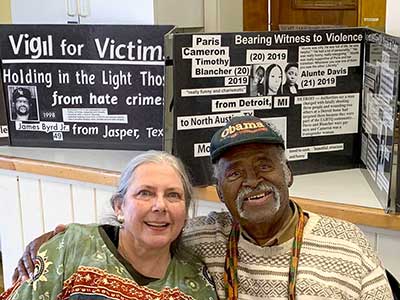by Oliver L. Riskin-Kutz | March 2021
Peabody Museum of Archaeology and Ethnology administrators apologized for the “pain” the museum caused by its refusal to voluntarily return certain funerary objects to Native American tribes and pledged to reverse the policy in response to a letter from the Association on American Indian Affairs last month criticizing the museum. In February, the Association sent a letter to University President Lawrence S. Bacow accusing Harvard of legal and moral violations in the Museum’s practices regarding its collections of Native American human remains and cultural objects. In the letter, the nonprofit said Harvard’s practices are in violation of the Native American Graves Protection and Repatriation Act.
TAGS: [Strategies] [2020’s] [Indigenous] [Art & Culture] [Systemic Racism] [White Culture] [Social Justice]
by Emily S. Renschler and Janet Monge | Month Unknown 2008
Although few visitors to the Museum would know this, the Samuel George Morton cranial collection at the University of Pennsylvania Museum of Archaeology and Anthropology is one of the most famous collections of human skulls in the entire world. Its presence in Philadelphia is the result of the collecting activities of Samuel George Morton (1799–1851), a Philadelphian who actively participated in the vibrant medical and scientific community that spanned the Atlantic Ocean in the early 19th century.
TAGS: [Assumptions] [2020’s] [Art & Culture] [History] [Slavery] [Indigenous] [Black Lives Matter] [Latino/a] [Myths] [White Supremacy] [White Privilege] [White Culture] [Systemic Racism]
by Shanelle Genai | March 2021
When composer Daniel Roumain was commissioned to create an original work for “Greenwood Overcomes,” a celebration led by the Tulsa Opera to recognize the 100th anniversary of the Tulsa Race Massacre, I’m sure he never thought one lyric would be enough to lose him the commission. Unfortunately, it was. As Vulture reports, Roumain composed an aria inspired by the horrific details of the massacre titled They Still Want to Kill Us, with the last two lines reading: “God bless America/God damn America.” But when mezzo-soprano singer Denyce Graves, who was set to perform the aforementioned song, expressed concerns over those lines—Tulsa Opera asked Roumain if he would consider changing the lyrics. He said no, and now, both Roumain and his work are now no longer a part of the celebration.
TAGS: [Assumptions] [2020’s] [Silencing POC] [Systemic Racism] [History] [Art & Culture] [-ing While Black] [Black Lives Matter] [Denial] [White Defensiveness] [White Supremacy] [White Privilege] [White Blindness] [White Fragility/Tears]
by Sharai | February 2021
I was hoping that being socially distanced this February would let us avoid some of the issues that make me angry every year. While these behaviors are year-round problems they seem to dramatically increase every February because a lot of white people want to take part in Black History Month but don’t get how these behaviors come across. I believe this stems from society not knowing how to talk about race and I have created a quick list from things I’ve clocked on social media last week. Hopefully, this list helps those of you who are serious about doing better.
TAGS: [Individual Change] [2020’s] [Tips-Dos/Don’ts] [History] [Black Lives Matter] [White Privilege] [“All Lives Matter”] [White Fragility/Tears] [Systemic Racism]
by Anna North | January 2021
It’s tempting to think of the storming of the US Capitol on Wednesday as toxic masculinity run amok: a mob of mostly white men, carrying guns and wearing animal skins, trying to overthrow democracy on behalf of a president who once bragged about his ability to grab women “by the pussy.” It’s even more tempting to embrace this narrative when, in a bizarre statement, that president’s campaign press secretary describes him as “the most masculine person, I think, to ever hold the White House.”
But focusing too much on masculinity obscures a crucial truth: Many women were either present at the riot or cheering on the insurrectionists from back home. There was Ashli Babbitt, the 35-year-old Air Force veteran and apparent devotee of QAnon ideology who was killed during the riot. There was the woman photographed with “zip-tie guy” Eric Munchel, now believed to be his mother. There was Martha Chansley, the mother of the widely photographed “QAnon shaman” who wore a horned hat and carried a spear to Congress. She wasn’t present at the riot but later defended her son in an interview, calling him “a great patriot, a veteran, a person who loves this country.”
TAGS: [Assumptions] [2020’s] [White Supremacy] [White Culture] [White Blindness] [White Defensiveness] [White Privilege] [Politics] [Black Lives Matter] [Civil War] [Myths] [Slavery] [Economics] [History] [Calling Police] [Systemic Racism]
by SMITHSONIAN VOICES | April 2019
On Friday, April 12, 2019, representatives of the three federally recognized tribes of the Cherokee people—the Cherokee Nation of Oklahoma, Eastern Band of Cherokee Indians, and United Keetoowah Band of Cherokee Indians in Oklahoma—came together at the National Museum of the American Indian in Washington, D.C., for the installation of the Treaty of New Echota in the exhibition Nation to Nation: Treaties Between the United States and American Indian Nations. Negotiated in 1835 by a minority party of Cherokees, challenged by the majority of the Cherokee people and their elected government, the Treaty of New Echota was used by the United States to justify the forced removal of the Cherokees from their homelands along what became known as the Trail of Tears.
TAGS: [Strategies] [2010’s] [Indigenous] [History] [Art & Culture] [White Supremacy] [White Culture] [Systemic Racism] [Politics] [Justice System]

















